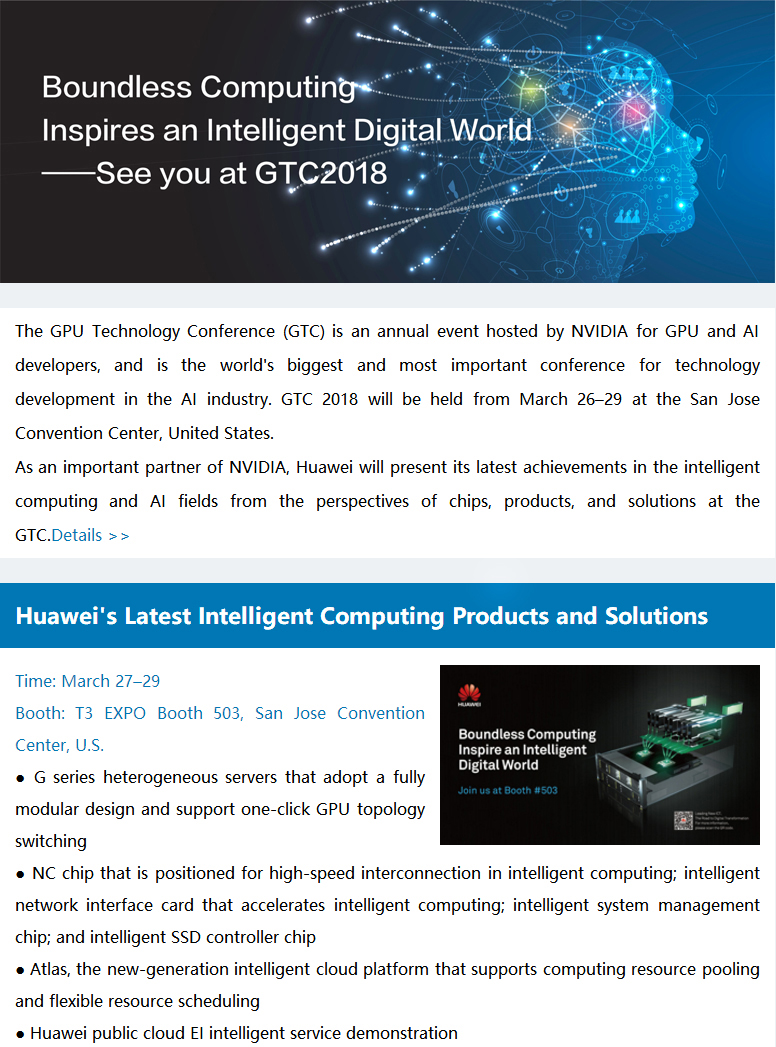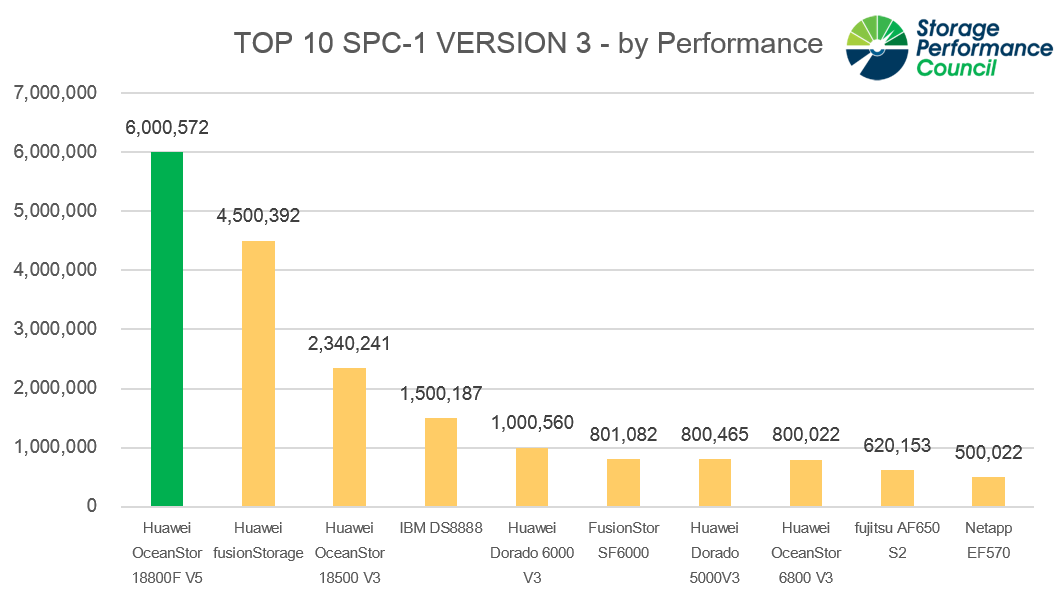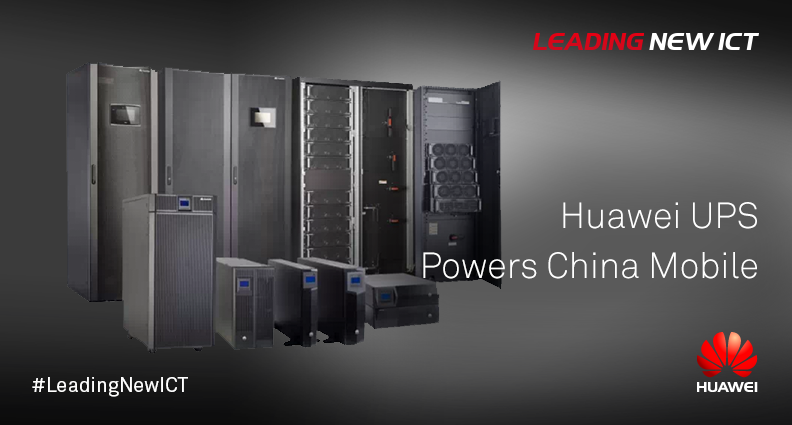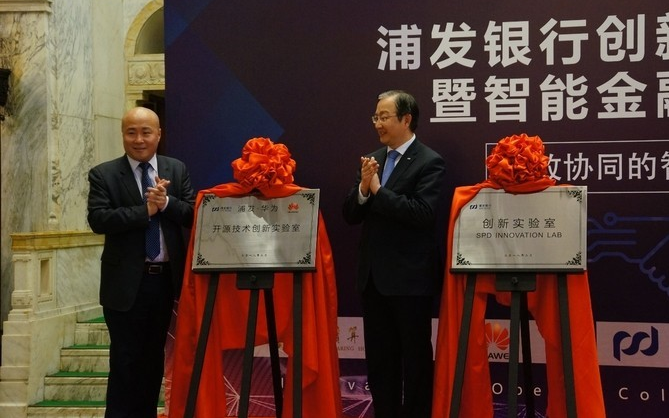
Huawei’s Intelligent Computing at the Coming GTC2018



The post Huawei’s Intelligent Computing at the Coming GTC2018 appeared first on Huawei Enterprise Blog.
Source: Huawei Enterprise Blog
—




The post Huawei’s Intelligent Computing at the Coming GTC2018 appeared first on Huawei Enterprise Blog.
Source: Huawei Enterprise Blog
—


On March 21-22, the 2018 Data Center World (DCW) is held in London. Huawei shows its large capacity integrated power solution, FusionPower to Europe customers for the first time. Huawei FusionPower solution, with 1.2MW capacity and 97% system efficiency, attracts lots of attention from DCW participants and visitors.

The annual power consumption of data centers is as high as 300 billion kWh, which make it as the world’s 5th largest power consumer. Saving energy has been a hot topic in Europe for several years. Improving energy efficiency of data center is one of key topics for 2018 DCW.
Huawei FusionPower solution integrates power distribution with UPS. The solution saves footprint by 40% and installation time by 60%. It provides system efficiency up to 97%. Key components are hot-swappable and easy to maintain. Power chain monitoring, plus early warning of wearing parts, maximizes the system reliability. Huawei FusionPower is an ideal solution for large scale data centers.

AI, cloud computing and IoT technologies drive data center to go digital and smart. The conventional mode of data center construction is constrained by many factors, like capital investment, time, infrastructure, energy and human resource. How to maximize resource utilization efficiency is a very hot topic for DCW2018.
Huawei prefabricated modular data center solution integrates power, cooling, firefighting, cabling and management systems into prefabricated modules. All modules are prefabricated in the factory, which reduce TTM by 45%. This solution help customer’s service go-live quickly and expand the capacity flexibly. On-demand deployment reduces investment risks and shortens ROI by two years. Besides, the data center can be monitored by mobile APP and smart management system. Huawei’s unique iCooling technology improves energy efficiency by 8% and low down PUE to 1.2. Huawei DCIM+ smart management system brings a unified cloud platform for data center facility management. This system can minimize the O&M workload and save labor cost.

Data center is moving towards large scale and edge. This trend make O&M of data center more and more complex. The world expect a smart solution to managing data centers .The conventional data centers rely on manual management that is easy to make mistake and troubled by low efficiency and high uncertainty. The manual way is able to sustain in the digital era. How to reduce labor-reliance and improve management efficiency of data center has become a great challenge for the data center industry.
At DCW2018, Huawei shows its new generation of data center management system, DCIM+. This system provides functions like smart detection, smart analysis and smart decision-making. In addition, Huawei also demonstrates the i³ Solution, namely iCooling,iPower and iManager at the conference.

Huawei DCIM+ can monitor U-space automatically and allocate capacity and manage the asset of data center dynamically. It can improved the rack utilization efficiency by 20% and refine the operation of data center. With functions like e-inspection , self-diagnosis and mobile APP O&M ,Huawei DCIM+ increase the O&M efficiency from 140 person/rack to 210 person/rack. Besides, the AI-based iCooling can reduce PUE by 8% and maximize the energy saving.

In recent years, Huawei keeps steady investment in R&D of data center energy. Its global market share increase rapidly. It has won wide recognition from customers in European countries like UK and Germany as well as established long-term partnership with customers there. Huawei is awarded as”2017 Company of the Year Award” and “2017 Technology of Leadership Award” in the Global Smart Data Center Industry by Frost& Sullivan in 2017 and receive Tier-IV Ready Certification. Huawei products and solutions have been widely used in many industries, like telecom carrier, ISP, government, finance, transportation, energy, healthcare, education, broadcasting and media.
The post Huawei Unveils the Large-capacity FusionPower Solution for Europe at DCW2018 appeared first on Huawei Enterprise Blog.
Source: Huawei Enterprise Blog
—


On March 21-22, the 2018 Data Center World (DCW) is held in London. Huawei shows its large capacity integrated power solution, FusionPower to Europe customers for the first time. Huawei FusionPower solution, with 1.2MW capacity and 97% system efficiency, attracts lots of attention from DCW participants and visitors.

The annual power consumption of data centers is as high as 300 billion kWh, which make it as the world’s 5th largest power consumer. Saving energy has been a hot topic in Europe for several years. Improving energy efficiency of data center is one of key topics for 2018 DCW.
Huawei FusionPower solution integrates power distribution with UPS. The solution saves footprint by 40% and installation time by 60%. It provides system efficiency up to 97%. Key components are hot-swappable and easy to maintain. Power chain monitoring, plus early warning of wearing parts, maximizes the system reliability. Huawei FusionPower is an ideal solution for large scale data centers.

AI, cloud computing and IoT technologies drive data center to go digital and smart. The conventional mode of data center construction is constrained by many factors, like capital investment, time, infrastructure, energy and human resource. How to maximize resource utilization efficiency is a very hot topic for DCW2018.
Huawei prefabricated modular data center solution integrates power, cooling, firefighting, cabling and management systems into prefabricated modules. All modules are prefabricated in the factory, which reduce TTM by 45%. This solution help customer’s service go-live quickly and expand the capacity flexibly. On-demand deployment reduces investment risks and shortens ROI by two years. Besides, the data center can be monitored by mobile APP and smart management system. Huawei’s unique iCooling technology improves energy efficiency by 8% and low down PUE to 1.2. Huawei DCIM+ smart management system brings a unified cloud platform for data center facility management. This system can minimize the O&M workload and save labor cost.

Data center is moving towards large scale and edge. This trend make O&M of data center more and more complex. The world expect a smart solution to managing data centers .The conventional data centers rely on manual management that is easy to make mistake and troubled by low efficiency and high uncertainty. The manual way is able to sustain in the digital era. How to reduce labor-reliance and improve management efficiency of data center has become a great challenge for the data center industry.
At DCW2018, Huawei shows its new generation of data center management system, DCIM+. This system provides functions like smart detection, smart analysis and smart decision-making. In addition, Huawei also demonstrates the i³ Solution, namely iCooling,iPower and iManager at the conference.

Huawei DCIM+ can monitor U-space automatically and allocate capacity and manage the asset of data center dynamically. It can improved the rack utilization efficiency by 20% and refine the operation of data center. With functions like e-inspection , self-diagnosis and mobile APP O&M ,Huawei DCIM+ increase the O&M efficiency from 140 person/rack to 210 person/rack. Besides, the AI-based iCooling can reduce PUE by 8% and maximize the energy saving.

In recent years, Huawei keeps steady investment in R&D of data center energy. Its global market share increase rapidly. It has won wide recognition from customers in European countries like UK and Germany as well as established long-term partnership with customers there. Huawei is awarded as”2017 Company of the Year Award” and “2017 Technology of Leadership Award” in the Global Smart Data Center Industry by Frost& Sullivan in 2017 and receive Tier-IV Ready Certification. Huawei products and solutions have been widely used in many industries, like telecom carrier, ISP, government, finance, transportation, energy, healthcare, education, broadcasting and media
The post 2018DCW Huawei unveiled its large-capacity Fusion power supply and distribution solution for the first time in European exhibitions appeared first on Huawei Enterprise Blog.
Source: Huawei Enterprise Blog
—


With the popularity of all flash, strong storage performance features are becoming more and more intensified. For example, 100,000 IOPS was considered very high in 2008, but now even 10 million IOPS is a performance that many vendors claim to offer. Other features, such as storage systems latency shortened from milliseconds to microseconds, has meant that the all-flash market is more competitive than ever.
Misleading Points in Storage Performance Promotion
Despite the many advancements in the industry, many vendors use false advertisements to promote their all-flash products. Let’s look at several misleading points in storage performance promotion.
Point 1: Use performance with a 100% cache hit ratio
When promoting storage performance, many vendors often write “100% cache hit” in the remarks. This means that all data is stored in memory, instead of being stored permanently. The criterion to decide a high-performance IT architecture is to check whether it stores the most frequently accessed data to the place with the fastest response.

The preceding figure shows that hot data at L0 to L2 layers is scheduled by the operating system’s CPUs, while data at L3 to L4 layers is scheduled by the storage system.
This is to say it is almost impossible to have a 100% catch hit ratio in customers’ environments. Because all flash storage applies to not only different industries but also to varying business models within in industry, this claim should be taken with a grain of salt, and customers should thoroughly check their needs against the product.
Point 2: 100% read performance
Mainstream SSDs offer high performance in data reads, but their write performance is lackluster because each time data is written, SSDs erase data from a NAND before writing new data. This process is called “Program/Erase”, which takes 1 ms to 2 ms in MLC/TLC NAND flash, leading to huge performance differences in data reads and writes.

SSDs often reserve a large amount of over-provisioning space and the “Erase/Program” process is not required every time when data is written onto SSDs. Generally speaking, SSD performance deteriorates in read and write, and read-only scenarios. Therefore, real-life performance value must reflect the customers’ business models, instead of just using the value of 100% read performance.

Point 3: Performance stability
Many vendors only a promote reference value using a specific model and under certain pressure, rather than showing their products’ stability.
 The stability of storage performance is critical, especially when service pressure changes and in complex service environments. When choosing storage SLA, customers regard stability as one of the most important indicators, so vendors who produce limited results are misleading their customers.
The stability of storage performance is critical, especially when service pressure changes and in complex service environments. When choosing storage SLA, customers regard stability as one of the most important indicators, so vendors who produce limited results are misleading their customers.
Stability indicates that response time of 99% services must remain stable under a certain value. If services fluctuate, user experience will suffer. However, most customers have not realized this issue.
SPC, the Most Commonly Used Third-Party Storage Performance Evaluation Platform
Test standards (especially SPC-1 test for random IOPS effectiveness) proposed by the Storage Performance Council (SPC) are a common reference for measuring storage products’ performance in the industry. Mainstream vendors such as EMC, NetApp, Dell, HPE, HDS, Huawei, IBM, and Fujitsu have participated in the SPC tests and used test results to promote their products’ performance and cost effective features. This makes SPC-1 a well-known indicator for measuring the performance of products from various brands.
The test specifications of SPC-1 are strict and fair. Its test program prevents deliberate data value manipulation and its test models are similar to mainstream transaction workloads, meaning SPC-1 is a reliable reference to reflect real-life application environments.

Huawei’s OceanStor 18800F V5 has achieved outstanding results in SPC-1 tests.

Huawei OceanStor F V5, Groundbreaking High-Performance All-Flash Storage
Equipped with OceanStor V3 converged storage systems rich store of enterprise-class features and high-availability ratings, Huawei’s OceanStor F V5 all-flash storage takes performance and integration to the next level with architectures specifically designed for all-flash layouts. Huawei’s newest offerings provide organizations with a complete data management solution for their critical services and leverage built-in optimizations to enable all-flash, all-cloud, and all-intelligence strategies. The mid-range and high-end offerings extend Huawei’s flash portfolio, adding to those able to meet even broader range of customer requirements.
Huawei is committed to providing continuously higher performance and reliability for all storage customers satisfying ever-escalating demands from the application environments at organizations of all sizes. Huawei Storage has broken many records in SPC-1 performance testing since 2010. The OceanStor 18800 F V5 is the latest offering to break away from the pack, demonstrating the immense advantages of the intelligence-infused flash storage under scrutiny of industry testing.
performance testing since 2010. The OceanStor 18800 F V5 is the latest offering to break away from the pack, demonstrating the immense advantages of the intelligence-infused flash storage under scrutiny of industry testing.

The OceanStor F V5 uses innovative self-developed flash end-to-end architecture (including multi-core CPU optimization), and leverages adaptive cache and self-developed SSD algorithms to achieve in-depth integration of system software and hardware. Its superior performance provided by all-flash storage helps deliver superb user experience, helping core business easily embrace the era of all-flash storage.
This storage system uses next-generation self-developed SSD controller chips with high performance to work with new-generation efficient patent algorithms, providing users with reliable and high-performance SSD drives. Equipped with self-developed dedicated controllers optimized for all-flash storage, industry-leading system architecture, and multi-controller processing architecture with load balancing, the OceanStor F V5 provides powerful all-flash processing capabilities and fully meets algorithm processing requirements of all-flash systems. Moreover, advanced processor resource allocation algorithms, LDPC error correction algorithms, and RAID 2.0+ technology achieve longevity of SSDs and fast I/O response, unleashing the potential of all-flash storage.
(Contributed by Wang Tao, Storage Product Line)
The post Key Approaches to Selecting High-Performance All-Flash Storage appeared first on Huawei Enterprise Blog.
Source: Huawei Enterprise Blog
—


Fast digital transformation poses a challenge for data-center facilities. A reliable power supply solution is critical for zero service interruption. Modular UPS is now smartening up facilities with digitization and networking technologies.
Recently, China Mobile has chosen Huawei UPS as its power solution partner. He has been ranked No.1 in China Mobile’s list of core UPS suppliers for five consecutive years. Its UPS now stands as the first choice for China’s mainstream telecom carriers.
China Mobile, which has the largest subscriber base in China, has aggressively invested in developing cloud services, Internet of Things (IoT) and other cloud-based businesses. The company also has a significant investment in data center facilities. China Mobile’s centralized procurement over the past four years has phased out transformer-based UPS and fully replaced it with transformerless UPS. High-frequency modular UPS accounts for the largest share of the company’s current core UPS. Over the past three years, use of modular UPS grew at an annual rate of 260% at China Mobile. The move to modular UPS was to take advantage of its high availability, easy maintenance and high scalability.
With its intensive R&D expertise, Huawei integrates digital technology into power and electronic products, which improves product scalability and availability. In addition, its high-frequency modular UPS takes on-line double conversion and modular redundancy design. In addition, its power, monitoring, bypass and control modules are hot-swappable and easy to install, expand and maintain. The UPS also provides early-alarm on critical components to prevent fault spread and stabilize the power supply.
Li Junpeng, President of Marketing Operations at Huawei Network Energy, said: “Huawei’s modular UPS smartening up facilities with digitization and networking technologies, provides better support for the future development of China Mobile’s business.”
Huawei’s market share has maintained rapid growth worldwide. Huawei power solutions have been applied to a wide range of industries, including ISP, government, transportation and finance. Meanwhile, Huawei solutions have won wide recognition from customers in Europe and the South Pacific region and has become of top choice for customers there. Huawei’s smart power solutions guarantee customers’ power stability in all rounds.
The post Huawei’s Modular UPS dominates in the China Telecom Carriers appeared first on Huawei Enterprise Blog.
Source: Huawei Enterprise Blog
—



![]()







The post Huawei IT Waiting for You at MWC2018 appeared first on Huawei Enterprise Blog.
Source: Huawei Enterprise Blog
—


In the afternoon of February 6, the Opening of the SPD Innovation Lab and Intelligent Financial Cooperation Forum was held at the Bund No. 12 alongside the Huangpu River. The forum officially unveiled the SPD-Huawei Open Source Technology Innovation Lab, which will actively promote the application of open source technologies in the financial field, provide technical support for service innovation, and explore and form an open source technical architecture. The lab will focus on deep study of hybrid cloud technologies in the financial industry and focus on the optimization and improvement of enterprise-level big data processing platforms, promoting the application and practice of the hybrid cloud infrastructure. It will also serve as a platform to discuss the use of next-generation communications and IoT technologies in the financial industry.
Pan Weidong, Deputy Director of SPD Bank and Ye Changlin, Vice President of Huawei China attended the ceremony. In his speech, Mr. Pan expressed his hope that both parties will exert their respective strengths through close cooperation, and integrate their advantages in technology and financial services, helping to build a new benchmark for joint innovation projects, explore new models of collaborative services, and build a new bridge for cultural communication. This project will significantly accelerate the development of both sides.
At the unveiling ceremony, Mr. Ye said that in recent years the development of cloud computing and big data poses challenges to traditional business models of banking institutions. Therefore, creating a flexible, agile, and unified financial cloud platform infrastructure that can efficiently support financial services is crucial for those working within the financial industry. Together, Huawei and SPD Bank transform the financial industry. By leveraging its advantages in ICT products and solutions, Big Data analysis, and cloud computing, Huawei will promote innovative applications of financial services through communications and cooperation with SPD Bank for ICT planning and construction, computing, Big Data, and SDN. Such cooperation will ensure the implementation of joint innovation achievements in SPD Bank.
 Ceremony of the SPD Bank-Huawei Joint Innovation Lab
Ceremony of the SPD Bank-Huawei Joint Innovation Lab
The joint innovation lab will facilitate resource sharing between SPD Bank and Huawei, maximizing the advantages for both sides, and implementing innovative internet-based financial services through cooperation. Customers of both parties will be provided with more convenient, efficient, and diverse services.
The post SPD Development Bank and Huawei Set up a Joint Innovation Lab appeared first on Huawei Enterprise Blog.
Source: Huawei Enterprise Blog
—